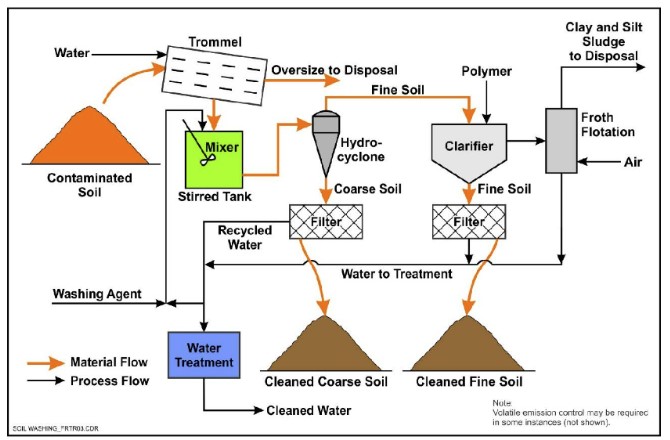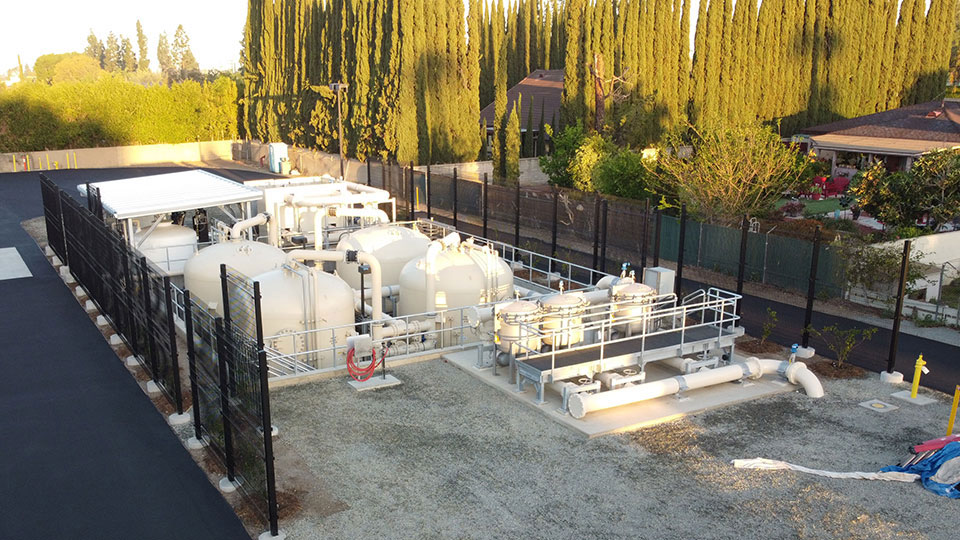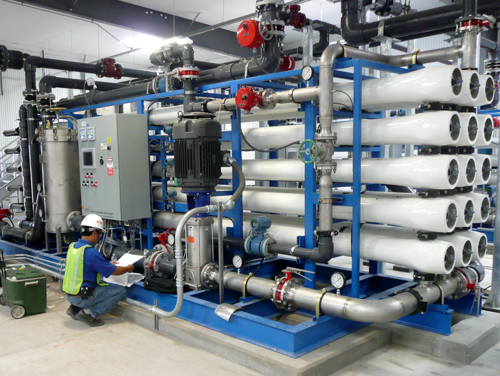Your Guide to PFAS Treatment Technologies and Perks
The frequency of PFAS contamination in water resources demands a detailed understanding of offered therapy modern technologies. Numerous approaches, such as triggered carbon filtration, ion exchange systems, and advanced oxidation processes, present unique benefits in attending to these persistent toxins. Each technology not only targets particular PFAS compounds yet also plays a crucial function in enhancing general water top quality and safeguarding ecological stability. As neighborhoods face the effects of PFAS direct exposure, the selection of an ideal treatment technique becomes increasingly crucial, motivating a closer evaluation of these modern technologies and their particular advantages.
Understanding PFAS Contamination
Recognizing PFAS contamination is vital for addressing its pervasive effect on environmental and human health (m270 pfas treatment). Per- and polyfluoroalkyl compounds (PFAS) are a group of artificial chemicals widely made use of in numerous commercial and consumer items as a result of their water- and grease-resistant homes. Commonly located in firefighting foams, non-stick pots and pans, and water-repellent materials, PFAS have actually gotten in the setting with manufacturing processes, wastewater discharges, and seeping from land fills
As soon as released, these substances persist in the setting, leading to prevalent contamination of dirt and water sources. Their special chemical framework, characterized by solid carbon-fluorine bonds, makes them immune to deterioration, causing a phenomenon called "permanently chemicals." Subsequently, PFAS can gather in the human body and the food cycle, possibly triggering negative health results, consisting of body immune system disturbance, developing issues, and a raised danger of specific cancers cells.
Regulatory agencies and health organizations are increasingly acknowledging the importance of PFAS contamination, motivating initiatives to check, examine, and alleviate its impacts. Recognizing the paths of PFAS contamination is important for notifying public law and developing reliable strategies to shield both environmental and human health and wellness.
Review of Therapy Technologies
Numerous therapy technologies have been established to deal with the difficulties postured by PFAS contamination in water and soil. These technologies can be extensively categorized into numerous groups, each with its special systems and efficiency in eliminating PFAS substances.
One popular technique is ion exchange, which makes use of material materials to catch and remove PFAS from contaminated water. This method is specifically effective for short-chain PFAS and can attain significant decreases in focus levels. An additional modern technology, advanced oxidation procedures (AOPs), uses strong oxidants and ultraviolet light to damage down PFAS into less hazardous compounds. AOPs appropriate for dealing with a wide variety of PFAS substances but might require careful optimization to maximize efficacy.

Activated Carbon Filtering
Triggered carbon purification is an extensively made use of method for the removal of PFAS from infected water, recognized for its capacity to adsorb a broad variety of natural compounds. This technology uses triggered carbon, a highly permeable material with a substantial area, which assists in the binding of PFAS molecules via physical adsorption. The efficiency of activated carbon in eliminating PFAS is affected by a number of variables, consisting of the type of carbon utilized, the contact you could try this out time, and the concentration of PFAS in the water.
Among the advantages of turned on carbon filtration is its adaptability; it can be executed in various configurations, such as granular triggered carbon (GAC) systems or powdered turned on carbon (POLITICAL ACTION COMMITTEE) systems. GAC systems are normally employed in larger-scale applications, while special-interest group can be utilized in smaller or momentary arrangements. Additionally, the innovation is reasonably simple to operate and keep, making it easily accessible for lots of water therapy centers.

Ion Exchange Equipment
Ion exchange systems stand for one more reliable approach for the elimination of PFAS from polluted water, enhancing approaches like activated carbon filtration. These systems operate the concept of trading ions in the water with ions held on a resin material. Ion exchange resins can be especially created to target the adversely charged PFAS substances, properly catching them and allowing cleaner water to travel through.
One of the primary advantages of ion exchange systems is their capacity to get rid of a variety of PFAS, including both long-chain and short-chain variants. This versatility makes them suitable for different applications, ranging from local water therapy to commercial procedures. In addition, ion exchange systems can typically accomplish lower detection limitations for PFAS contrasted to some other therapy techniques, thus enhancing water top quality.
Nonetheless, it is necessary to keep an eye on and manage the regeneration of ion exchange media, as the performance can decline with time due to saturation. Correct maintenance and replacement of the resin are essential for sustaining the system's effectiveness. Overall, ion exchange systems supply a reputable and efficient service for PFAS elimination, adding significantly to safe alcohol consumption water go to this site requirements and ecological protection.
Advanced Oxidation Processes
Advanced Oxidation Processes (AOPs) use effective oxidants to properly break down PFAS substances in contaminated water. These innovative treatment methods generate extremely reactive types, such as hydroxyl radicals, that can break down complicated PFAS molecules into less hazardous by-products. m270 pfas treatment. AOPs commonly utilize combinations of ultraviolet (UV) light, ozone, hydrogen peroxide, or Fenton's reagent, boosting the oxidation potential and boosting degradation effectiveness
The primary benefit of AOPs hinges on their ability to target a broad variety of PFAS compounds, consisting of both long-chain and short-chain variations. This versatility is essential, as PFAS contamination commonly includes mixtures of various compounds with differing chemical frameworks. AOPs can be integrated right into existing water treatment systems, making them a practical solution for several towns and industries.
However, the execution of AOPs can be resource-intensive, requiring careful factor to consider of functional expenses and go to my blog energy usage. Furthermore, while AOPs work in breaking down PFAS, they may not entirely eliminate all by-products, necessitating additional treatment steps - m270 pfas treatment. Overall, AOPs represent a promising avenue for resolving PFAS contamination, adding to cleaner water sources and boosted public health and wellness protection

Verdict
In final thought, dealing with PFAS contamination calls for a comprehensive understanding of readily available therapy technologies. Triggered carbon purification, ion exchange systems, and progressed oxidation processes each present special advantages for successfully getting rid of these hazardous substances from water resources. By selecting the suitable modern technology, communities can improve water high quality, safeguard public health and wellness, and reduce the ecological threats connected with PFAS direct exposure. Continued study and execution of these techniques are essential for effective monitoring of PFAS contamination in affected locations.